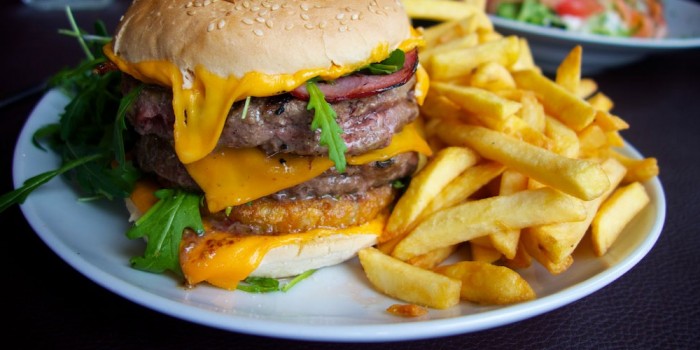Learning from Bus Buddhists
In psychological terms, context is almost everything. Much as we like to think that we know how we will act and react in a given situation, without the richness of...
The Influence of Fast Food Images

Part One
Recently I was in heading for a meeting with a company in a part of London I haven’t visited for several years.
I arrived by tube and emerged from the station into a shopping centre.
Since I had some time to spare I decided to have a wander around and undertake a bit of shopper-watching (something I enjoy a lot more than shopping).
What struck me most was the nature of the shops I was seeing: virtually every single store was a food outlet! Cafes, restaurants, fast food outlets, coffee shops, bakeries… almost nothing but food.
That there is a trend favouring this kind of retail doesn’t surprise me: on-line shopping has grown rapidly by virtue of being able to offer more choice, more cheaply and, frequently, more conveniently.
Our love of what’s easy extends to food: increasingly, we pick up something that’s been prepared for us rather than prepare it ourselves. Plus there is something distinctly moreish about the (frequently) fatty, salty and/or sugary foods that make up a high proportion of what’s ‘conveniently’ available. Regrettably, I fear the UK is following the US model and we’ll be competing in the obesity stakes for years to come.
One of the things that has always surprised me is the use of food photographs with fast food outlets: those pictures that adorn the windows and menu boards. It’s not as if most of us don’t know what, say, a pizza looks like. We’re also aware that the carefully crafted image may not bear a particularly strong resemblance to the food we buy. Added to which, a number of fast food offerings look distinctly dodgy no matter how you photograph them!
A recent study reveals just why so many outlets use photographs or display their products so clearly to prospective customers. Whilst the research was performed on people who were already obese, the researchers focused on obese Hispanic women who are considered a high risk group both for obesity and diabetes, I suspect the results have wider implications (judging by the average waist-size trends in Western society).
The women’s brains were scanned as they looked at pictures of calorie-dense foods, like burgers, cookies and cakes. After seeing the images participants rated their hunger and desire for sweet or savoury foods.
It transpired that the images stimulated the appetite and reward centres of the brain: in other words, seeing the pictures triggered the desire to eat.
Part Two
On a recent trip to the US I was astonished at the quantity of soda available in food outlets: in addition to the large cup size, free refills were commonplace and even a free take-away cup at the end of the meal.
I know that such drinks, mixed from syrup on-site, are a low cost, high margin item for fast food outlets, but could there be another reason that these restaurants are so keen to fill their customers up with soda?
In the same brain-imaging research, partway through the process an extra dimension was added: the women taking part were given a drink containing fructose.
In addition to the reward areas of their brains lighting up, indicating that they enjoyed the sweet drink, consuming it also led to an increased desire for savoury foods.
So it would appear that, rather than just offering large quantities of soda to deliver good value to customers, fast food outlets may have discovered that it causes customers to order more food than they otherwise would.
The conflict between unhealthy, calorie-dense fast food companies’ profits and the health of nations is, I suspect, going to become increasingly significant in the next few years as governments try to discourage people from over-eating.
However, the nature of the battle is such that, I fear, the power of those on the side of calorie-dense foods will prevail. The antidote is much more likely to be from other brands that can encourage us to be healthy, than it is from regulation.
Incidentally, just in case you think that diet sodas are the solution, there is evidence that they too trick the body into consuming more (see here for more on that).
Source: University of Southern California – Health Sciences (2012, June 25). Viewing images of high-calorie foods brings on high-calorie cravings, research finds. ScienceDaily. Retrieved July 2, 2012, from http://www.sciencedaily.com /releases/2012/06/120625160407.htm
Image courtesy: LoKan Sardari